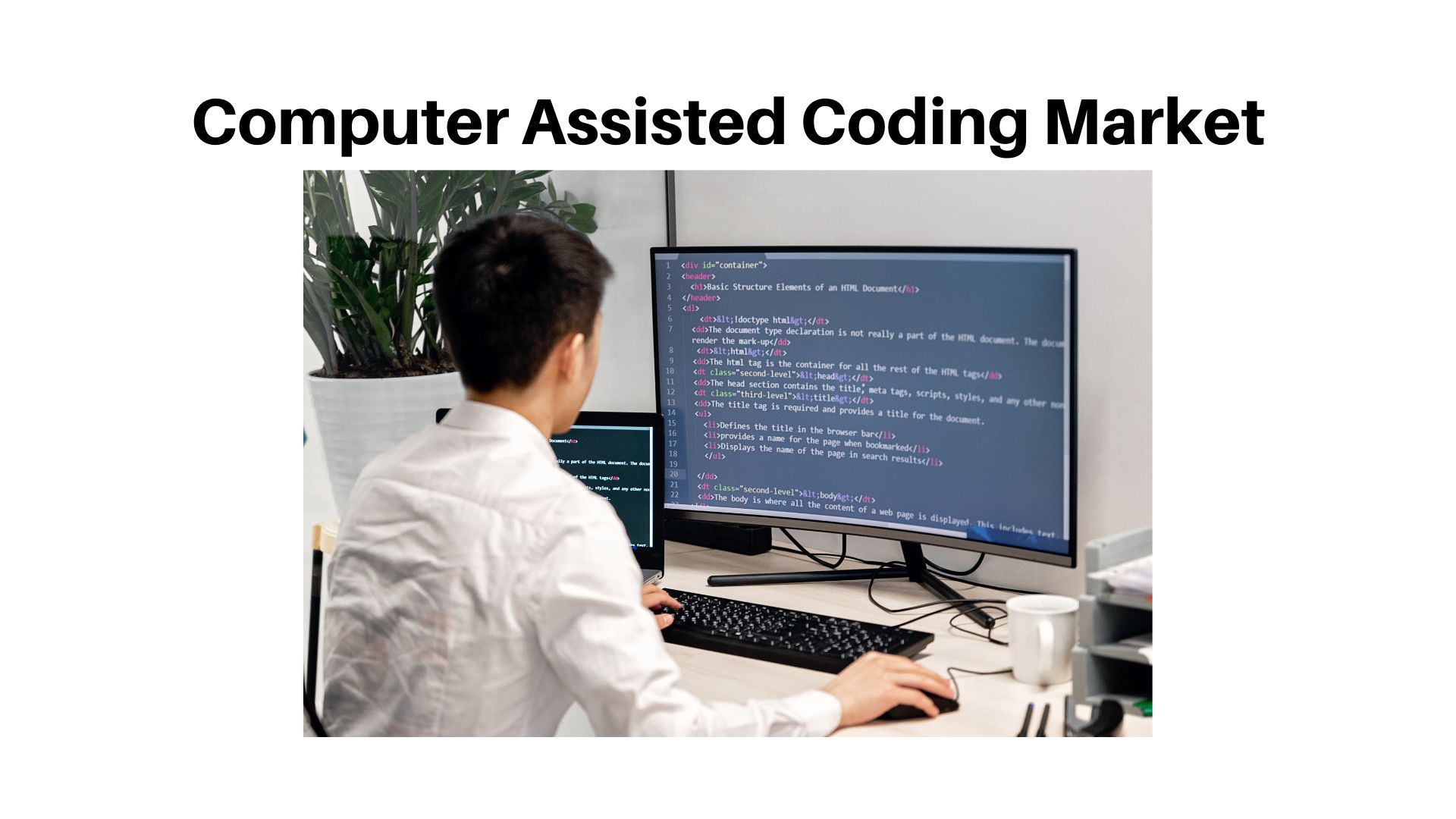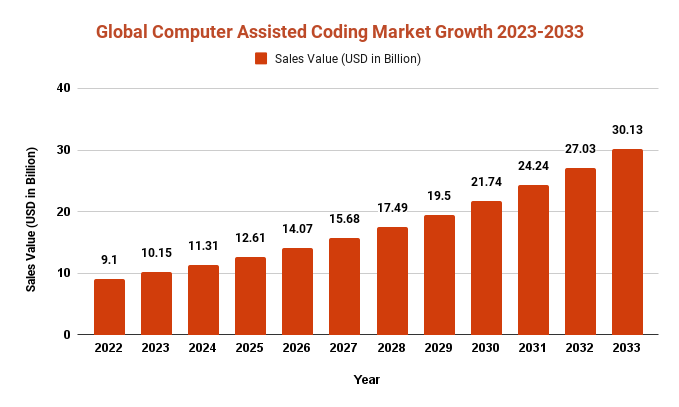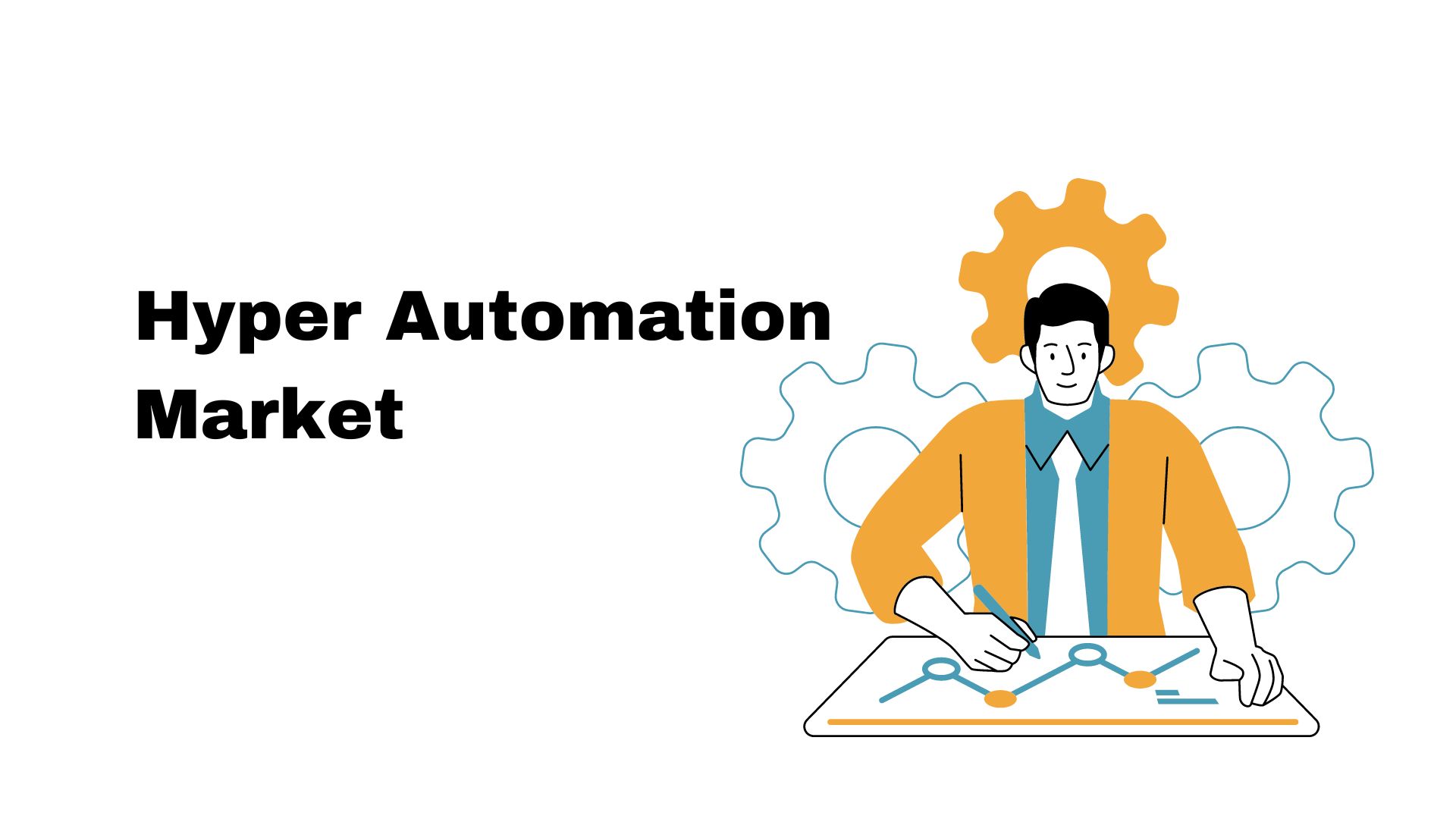Computer Assisted Coding Market Set to Grow at a CAGR of 11.5% from 2023 to 2033

Page Contents
Market Overview
Published Via 11Press: Computer-Assisted Coding Market is a process that utilizes natural language processing (NLP) technology to analyze healthcare documentation and assign appropriate codes for billing and reimbursement purposes. CAC software scans electronic health records (EHRs), clinical documentation and other sources to identify key terms and medical concepts to generate accurate medical codes. CAC technology can greatly enhance the speed and accuracy of medical coding, helping reduce errors while speeding reimbursement times. Furthermore, CAC helps ensure compliance with regulatory standards as well as improving documentation for quality assurance purposes and research studies.
The Computer Assisted Coding Market size is expected to reach USD 30.13 Bn by 2033, up from its current value of USD 9.1 Bn in 2022, growing at an annual compound growth rate (CAGR) of 11.5% from 2023-2033.
CAC systems can either use rule-based logic or machine learning algorithms to learn from past coding decisions and increase accuracy over time. They can easily integrate with electronic health record systems or serve as stand-in tools. Not to be taken too lightly, CAC technology remains imperfect and still needs human oversight for accuracy and compliance with coding regulations.
Key Takeaways
- Computer-assisted Coding (CAC) is an automated method using natural language processing technology to analyze healthcare documentation and assign appropriate codes for billing and reimbursement purposes.
- CAC software can improve both the efficiency and accuracy of medical coding, helping reduce errors while speeding reimbursement times. CAC can also ensure compliance with regulatory standards while increasing documentation for quality assurance/research purposes.
- CAC systems may use either rule-based or machine learning algorithms to learn from past coding decisions and increase accuracy over time.
- CAC technology is not perfect and still needs human review to ensure accuracy and compliance with coding regulations.
- CAC technology can easily integrate with existing electronic health record systems or be utilized independently as a standalone tool.
- CAC technology can bring numerous advantages to healthcare organizations of all sizes – from small clinics and physician practices, through hospitals and health systems, and beyond.
- Adopting CAC technology requires significant initial investments of time, training, and resources; however, its use can bring long-term cost savings and increased efficiency.

Request Sample Copy of Computer Assisted Coding Market Report at: https://marketresearch.biz/report/computer-assisted-coding-market/request-sample/
Regional Snapshot
- North America: CAC adoption rates in North America are relatively high, with the US being its primary market. CAC technology's rise can be attributed to healthcare organizations' need for efficient and accurate medical coding processes that increase with technology's advancement.
- Europe: Adoption of CAC technology across Europe has increased, with the UK serving as its primary market. ICD-10 implementation in Europe has only compounded this demand for CAC solutions that increase accuracy and efficiency when it comes to coding accuracy and efficiency.
- Asia-Pacific: Adoption of CAC technology in Asia-Pacific countries such as China, India and Japan is expected to increase steadily over the coming years, driven by their increasing need for efficient medical coding practices and accurate medical billing processes. EHR adoption will further fuel CAC adoption across this region.
- Latin America: CAC adoption in Latin America remains relatively low compared to other regions, yet is projected to rise in coming years due to increasing EHR adoption and the need for accurate medical coding, driving increased demand for CAC technology.
- Middle East & Africa: CAC adoption in this region remains relatively low compared to other areas; however, this number is expected to increase rapidly as EHR adoption rises and thus drives demand for CAC technologies that improve medical coding efficiency and accuracy.
Drivers
- As healthcare organizations struggle to increase efficiency, reduce costs and comply with compliance standards, the need for efficient and accurate medical coding has never been greater. CAC technology can assist organizations by automating the medical coding process; relieving manual coders from extra work while increasing accuracy and speed.
- Electronic Health Records (EHRs) Adoption has increased rapidly over time, and CAC technology can easily integrate with EHR systems to increase efficiency and accuracy when medical coding is being done.
- Compliance: Healthcare organizations must abide by various coding regulations and standards, and failure to do so can result in stiff penalties. CAC technology can help healthcare organizations stay compliant, thus decreasing penalties and legal issues associated with noncompliance.
- Cost Savings: Adequate and accurate medical coding can lead to cost savings for healthcare organizations. CAC technology can reduce errors, speed up reimbursement processes and streamline coding workflows resulting in significant long-term cost savings for the institution.
- Medical coding: It is crucial in providing patients with appropriate healthcare and healthcare organizations are reimbursed appropriately. CAC technology can assist in improving medical coding accuracy and thus lead to enhanced patient care outcomes.
- Advances in Technology: Recent improvements to natural language processing (NLP) and machine learning technology have improved CAC systems' accuracy and efficiency, prompting more people to embrace CAC tech as it becomes available. As these technologies advance further, adoption rates should increase over time.
Restraints
- Cost: Implementing CAC technology may require a substantial initial investment from smaller healthcare organizations with limited budgets, and may prove prohibitive due to ongoing maintenance, training and support expenses.
- Lack of Standardization: Due to an absence of uniform medical coding terminology and systems, CAC technology may find it challenging to accurately assign codes – leading to errors that have financial and legal ramifications.
- Resistance to Change: Adopting CAC technology often necessitates significant modifications to current coding workflows and processes, which may elicit resistance from staff and stakeholders resulting in slower adoption and implementation of this technology.
- Limited Accuracy: Although CAC technology has seen substantial advancement, it still may not always identify and assign codes accurately, leading to errors and inaccuracies that can have both financial and legal ramifications.
- Regulatory Challenges: Concerns related to data privacy and security regulations could also act as an impediment to adopting CAC technology in healthcare organizations, making them reluctant to implement CAC software owing to fears over compliance.
- Complexity: CAC technology can be complex, and staff may need extensive training in order to use it effectively. This could pose a barrier for smaller healthcare organizations with limited resources or training capacities available to them.
Opportunities
- Expansion of Healthcare Industry: With healthcare industries projected to experience continued expansion, and an expected surge in medical coding demand. This creates an opportunity to utilize CAC technology in improving efficiency and accuracy during medical coding processes.
- Advancements in Technology: With advances in natural language processing (NLP) and machine learning technologies, CAC technology is becoming more accurate and efficient – offering healthcare organizations an opportunity to adopt CAC software for improved accuracy and efficiency.
- Integration With Other Technologies: CAC technology can be integrated with other healthcare technologies, including electronic health records (EHRs) and revenue cycle management systems, to increase efficiency and accuracy. This presents healthcare organizations with an opportunity to adopt CAC technology while taking advantage of its compatibility with these other tools.
- Efficiency: As healthcare organizations struggle to reduce costs and increase efficiency, more are turning to outsourcing as a strategy for cost reduction and efficiency improvements. This presents CAC technology providers with an opportunity to offer their services as an outsourced solution for these organizations.
- Standardization efforts: Ongoing efforts to standardize medical coding terminology and systems provide CAC technology with an opportunity to become even more accurate and efficient as standardization efforts continue.
- Increased Awareness: As healthcare organizations gain more insight into the advantages of CAC technology, adoption rates may rise accordingly. This presents CAC technology providers with an opportunity to educate healthcare organizations on its many advantages and increase adoption rates.
Challenges
- Integrating CAC Technology Into Existing Systems: Integrating CAC technology with existing electronic health record (EHR) systems may present a difficulty, as most EHR systems were not created to work with CAC technology and may lead to compatibility issues that make its implementation challenging.
- Accuracy and Consistency: Maintaining accurate medical coding is of critical importance as errors can have both financial and legal repercussions. Unfortunately, CAC technology cannot always guarantee 100% accuracy; occasionally there may be inconsistencies with code assignments leading to errors and inaccuracies that lead to errors and inaccuracies.
- Cost and Return on Investment (ROI): Implementation of CAC technology can require significant upfront capital expenditure, with ongoing maintenance, training and support costs becoming a significant burden on small healthcare organizations with tighter budgets. Achieve positive return on Investment can often prove challenging.
- Staff Training and Acceptance: Employees may require extensive training in order to utilize CAC technology efficiently, and stakeholders may resist change; assuring staff acceptance may present a difficult challenge that delays adoption of CAC technologies.
- Privacy and Security: In the healthcare industry, data privacy regulations present major obstacles for implementation of CAC technology. Ensuring patient data remains protected can present unique challenges to healthcare organizations adopting such solutions.
- Lack of Standardization: Due to a lack of uniform medical coding terminology and systems, CAC technology may find it challenging to accurately identify and assign codes, leading to errors that have both financial and legal repercussions.
Market Segmentation
Application
- clinical code auditing
- management reporting & analytics
- automated computer-assisted encoding
End User
- payers
- provides
- other healthcare organizations
deliverables
- bifurcated into on-premises
- web-based
- cloud-based
product
- computer-assisted coding solutions
- computer-assisted coding services
Key Players
- Nuance Communications
- 3M Health Information Systems
- McKesson Corporation
- Optum
- Cerner Corporation
- TruCode
- Precyse Solutions
- Craneware
- Dolbey Systems
- Artificial Medical Intelligence.
Report Scope
| Report Attribute | Details |
| Market size value in 2022 | USD 9.1 Bn |
| Revenue forecast by 2033 | USD 30.13 Bn |
| Growth Rate | CAGR Of 11.5% |
| Regions Covered | North America, Europe, Asia Pacific, Latin America, and Middle East & Africa, and Rest of the World |
| Historical Years | 2017-2022 |
| Base Year | 2022 |
| Estimated Year | 2023 |
| Short-Term Projection Year | 2028 |
| Long-Term Projected Year | 2033 |
Request Customization Of The Report: https://marketresearch.biz/report/computer-assisted-coding-market/#request-for-customization
Recent Developments
- Advancements in Natural Language Processing (NLP) technology: NLP technology has seen considerable advances, helping CAC systems to better interpret clinical documentation and produce more accurate coding. NLP also makes CAC systems easier for staff members to navigate their way around CAC systems, leading to better patient experiences overall.
- Integrating CAC Technology With Other Healthcare Technologies: Its Medical coding software is increasingly being integrated with other healthcare technologies, such as electronic health records (EHRs) and revenue cycle management systems (RCM). Such integration can increase efficiency and accuracy for medical coding tasks.
- Cloud-Based CAC Solutions: Cloud-based CAC solutions have grown increasingly popular due to their numerous advantages such as scalability and lower upfront costs. Furthermore, these cloud-based solutions allow organizations with distributed workforces to access them remotely – this feature being particularly beneficial.
- AI-Powered CAC Solutions: Artificial Intelligence technologies such as machine learning and natural language processing are becoming more and more prevalent in CAC systems, increasing accuracy and efficiency over time. AI-powered CAC systems also can learn from changing coding requirements over time to adapt accordingly.
- Accuracy and Quality: As the healthcare industry increasingly places more of an emphasis on accuracy and quality in medical coding, CAC technology has become more prominent. Healthcare organizations increasingly search for CAC solutions which offer accurate coding with consistent outcomes.
- Standardization efforts: Ongoing efforts to standardize medical coding terminology and systems will make it easier for CAC technology to identify and assign codes accurately, making this more accurate, efficient and accessible to healthcare organizations of all sizes.
Key Questions
Q: What Is Computer-Assisted Coding (CAC)?
A: Computer Assisted Coding (CAC) is a technology which utilizes natural language processing (NLP) and machine learning algorithms to aid healthcare providers in assigning medical codes to patient data.
Q: What are the advantages of CAC technology?
A: Utilizing CAC technology offers many benefits for medical coding processes, including increased efficiency and accuracy of medical coding processes, reduced errors and omissions due to manual coding processes, compliance with regulations improved, cost reduction for manual processes as well as cost avoidance associated with manual processes.
Q: What are some challenges of implementing CAC technology?
A: Implementation of CAC technology may present several difficulties, such as integration with existing systems, accuracy and consistency in terms of accuracy and consistency of data gathering processes, cost/ROI calculations, staff training/acceptance issues as well as data privacy/security risks or lack of standardization issues.
Q: What have been some recent advancements in CAC technology?
A: Recent innovations include advancements in Natural Language Processing (NLP), integration with healthcare technologies, cloud-based solutions featuring AI powering the process and increased emphasis on accuracy and quality as well as ongoing standardization efforts.
Q: What benefits do healthcare organizations derive from using CAC technology?
A: Healthcare organizations can leverage CAC technology to increase efficiency and accuracy when it comes to medical coding, reduce errors and omissions in coding compliance regulations, and lower manual coding costs associated with manual processes.
Contact us
Contact Person: Mr. Lawrence John
Marketresearch.Biz (Powered By Prudour Pvt. Ltd.)
Tel: +1 (347) 796-4335
Send Email: [email protected]
The team behind market.us, marketresearch.biz, market.biz and more. Our purpose is to keep our customers ahead of the game with regard to the markets. They may fluctuate up or down, but we will help you to stay ahead of the curve in these market fluctuations. Our consistent growth and ability to deliver in-depth analyses and market insight has engaged genuine market players. They have faith in us to offer the data and information they require to make balanced and decisive marketing decisions.



